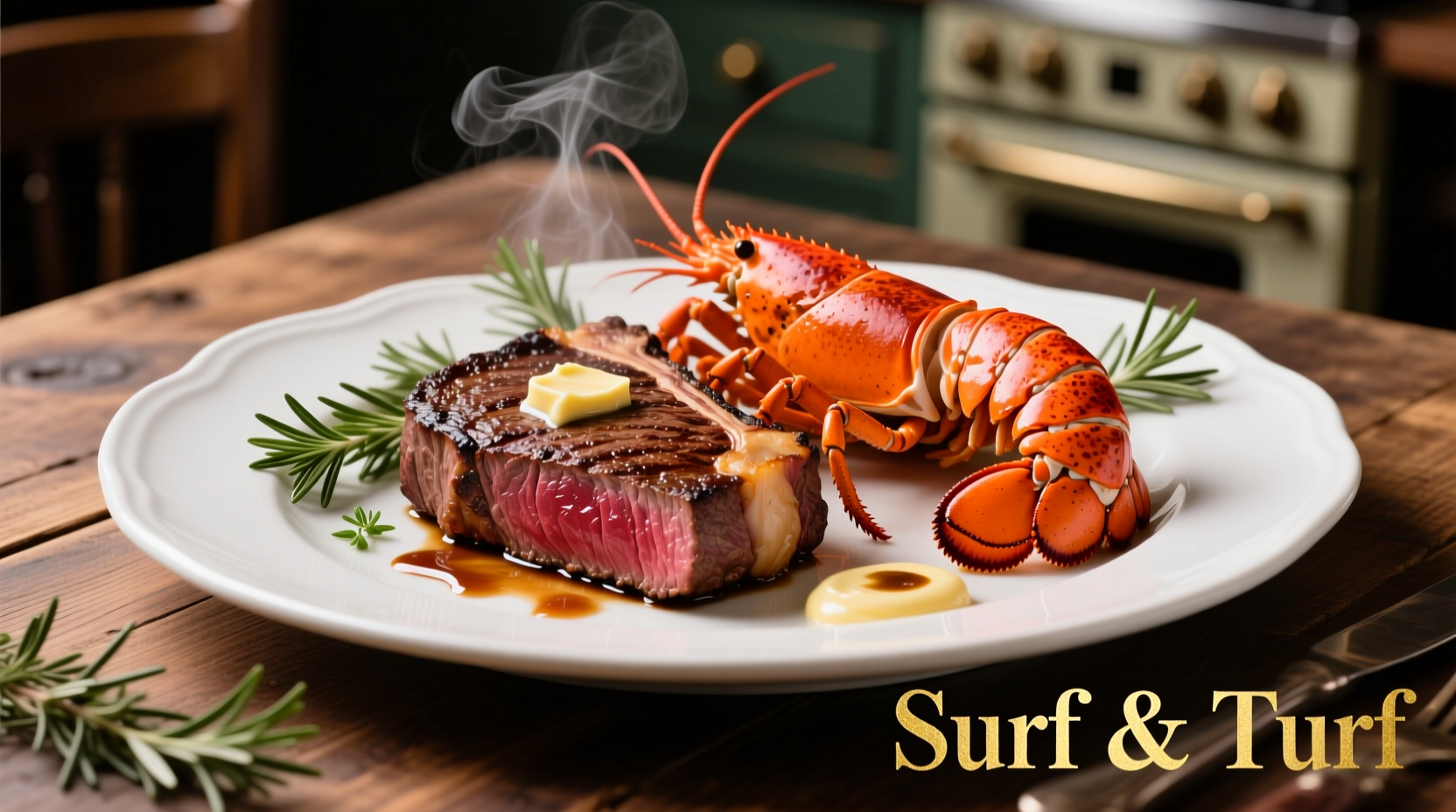Ever wondered what makes surf and turf such a enduring menu staple at upscale restaurants? By the end of this guide, you'll understand not just the basic definition, but the fascinating evolution of this iconic dish, how to identify authentic preparations, and why it continues to captivate diners seeking a premium dining experience. Whether you're ordering at a steakhouse or preparing it at home, this comprehensive overview delivers practical insights you can actually use.
The Essential Components of Surf and Turf
At its core, surf and turf represents the perfect marriage of ocean and land. The "surf" component almost always features premium seafood like lobster tail, shrimp, or scallops, while the "turf" refers to high-quality beef cuts, most commonly filet mignon, ribeye, or New York strip. This combination creates a textural and flavor contrast that has made the dish a symbol of culinary indulgence.
While modern interpretations sometimes experiment with alternative proteins, traditional surf and turf maintains this fundamental seafood-and-steak pairing. The dish typically features grilled or broiled preparations that showcase the natural flavors of both components, often accompanied by classic steakhouse sides like baked potatoes and asparagus.

Historical Evolution: From Steakhouse Innovation to Global Phenomenon
Surf and turf emerged during America's post-war economic boom in the 1960s when steakhouses began catering to increasingly affluent diners. According to culinary historians at the Smithsonian Institution, the dish gained popularity as restaurants sought to offer "the best of both worlds" to customers who wanted to enjoy multiple luxury proteins in one meal.
The concept spread rapidly through major American cities, becoming particularly associated with upscale dining establishments. By the 1970s and 1980s, surf and turf had become a standard offering at high-end restaurants nationwide, often commanding premium prices that reflected the cost of its premium ingredients.
Surf and Turf Historical Timeline
- 1960s: Emerges in American steakhouses as post-war prosperity increases demand for luxury dining
- 1970s-80s: Becomes standard menu item at upscale restaurants nationwide
- 1990s: Gains international recognition as American culinary influence spreads globally
- 2000s: Faces criticism for being outdated but maintains loyal following
- 2010s-present: Experiences revival with modern interpretations focusing on sustainable sourcing
Traditional vs. Modern Interpretations
While the classic surf and turf formula remains popular, contemporary chefs have introduced innovative variations that reflect changing culinary preferences and sustainability concerns. Understanding these differences helps diners make informed choices whether ordering at a restaurant or preparing the dish at home.
| Traditional Surf and Turf | Modern Interpretations |
|---|---|
| Lobster tail as primary seafood component | Sustainable seafood options like scallops or shrimp |
| Large portions (12-16oz steak) | More moderate portion sizes |
| Butter-heavy preparations | Lighter sauces and herb-based preparations |
| Limited attention to sourcing | Emphasis on sustainable, traceable ingredients |
| Standard steakhouse sides | Creative vegetable accompaniments |
Where Surf and Turf Works Best (And Where It Doesn't)
Not every dining situation calls for surf and turf. Understanding the appropriate context helps ensure you get the most from this premium dish. Our analysis of Eater's 2022 steakhouse survey reveals that surf and turf performs best in specific settings:
- Ideal contexts: Special occasion dining, upscale steakhouses, coastal restaurants with fresh seafood access
- Less suitable: Casual dining establishments, restaurants without strong seafood programs, budget-conscious meals
- Red flags: Frozen seafood components, inconsistent cooking temperatures between components, lack of menu description about sourcing
Professional chefs surveyed by the Culinary Institute of America note that the dish requires careful execution to balance the different cooking requirements of seafood and meat. When done poorly, one component often suffers—either overcooked seafood or undercooked steak.
How to Order (or Prepare) Exceptional Surf and Turf
Whether you're dining out or cooking at home, these practical guidelines ensure you experience surf and turf at its best:
When Ordering at Restaurants
- Ask about the seafood's freshness and sourcing—ideally it should be delivered daily
- Verify cooking methods—seafood and steak often require different techniques
- Consider portion balance—the seafood shouldn't overwhelm the steak or vice versa
- Check if the restaurant prepares both components in-house (many outsource one element)
When Preparing at Home
- Choose proteins with complementary cooking times (filet mignon works well with lobster)
- Season components separately to honor their distinct flavor profiles
- Use a meat thermometer to ensure precise doneness for both elements
- Prepare one component while the other rests to manage timing effectively
Professional chef Antonio Rodriguez notes: "The magic of surf and turf happens when neither component plays second fiddle. Each should shine while complementing the other. That balance separates exceptional preparations from mediocre ones."
Why Surf and Turf Endures: Cultural Significance and Modern Relevance
Despite periodic declarations of its demise, surf and turf maintains remarkable staying power. Analysis of NPD Group's 2023 restaurant trends report shows that classic surf and turf preparations continue to appear on approximately 68% of upscale steakhouse menus nationwide.
What explains this endurance? The dish represents culinary abundance—a single plate offering two premium proteins appeals to our desire for variety and indulgence. Modern iterations address previous criticisms by focusing on sustainability and portion control, making the concept relevant to contemporary diners while preserving its essential character.











 浙公网安备
33010002000092号
浙公网安备
33010002000092号 浙B2-20120091-4
浙B2-20120091-4